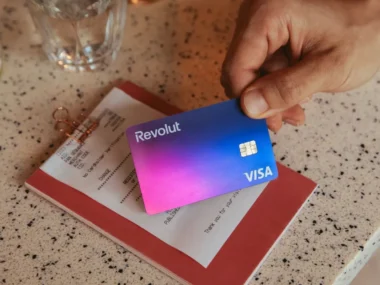You’ve probably heard a lot about American Express. Some call it exclusive. Others love it for the travel perks, rewards, or just the customer service. If you’re planning to get one, you’re likely hoping it’ll make spending smoother—and maybe help you build credit or earn points along the way.
But here’s the thing: not every Amex card is for everyone. It’s important to understand what makes them different, where they work, and what it takes to qualify. If you’re going to carry one in your wallet, it should fit your spending habits and actually help you reach your financial goals.
Amex isn’t accepted everywhere like Visa or Mastercard, but it’s growing fast. And if you use your card wisely, the benefits can seriously add up.
What Types of Cards Do They Offer?
American Express gives you more than one option. If you’re just looking for a solid everyday card, the Blue Cash Everyday® Card is a good starting point. It has no annual fee, and you’ll earn cash back at supermarkets, gas stations, and online.
If you travel often, the Gold Card or Platinum Card might make more sense. These come with travel credits, airport lounge access, and elevated points on flights and dining. But they do have annual fees—so make sure you’re getting enough in return to justify it.
Business owners aren’t left out. Amex also offers cards that help manage business expenses, including the Business Platinum Card. And if you’re rebuilding credit, the Amex Secured Card may be a good entry point.
Can You Qualify?
Before applying, take a look at your credit score. American Express is generally not a beginner card. Most cards require a credit score of 670 or higher, although a few like the Blue Cash Everyday might approve you with a slightly lower score.
You’ll also need proof of stable income. This doesn’t mean you need to be rich, but your income and existing debt will affect your approval chances and credit limit. Amex wants to see that you can manage credit responsibly.
If you’re unsure where you stand, you can check your credit score for free through sites like Credit Karma or your bank’s mobile app before applying.
What Happens When You Apply
You can apply online directly through the American Express application portal. You’ll be asked for your full name, Social Security Number, income, and housing details. It usually takes just a few minutes.
In many cases, you’ll get an instant decision. But if Amex needs to verify something—like your income or credit history—it might take a couple of days. If approved, your card is shipped within 5–7 business days.
What Fees Should You Expect?
Let’s talk money. Some Amex cards have no annual fee. But others, like the Platinum Card, charge $695 per year. That’s a lot—unless you travel frequently and make full use of the benefits like travel credits, hotel upgrades, and lounge access.
If you carry a balance, you’ll deal with interest. The APR ranges from about 19% to 29% depending on the card and your creditworthiness. Like with any credit card, you can avoid interest altogether by paying your full balance each month.
Watch for late fees and returned payment fees. Amex may charge up to $40 for each. Also, while many Amex cards have no foreign transaction fees, not all do—so double-check that before using your card abroad.
What About the Rewards?
This is where Amex stands out. Most of their cards earn Membership Rewards® Points, which you can redeem for travel, gift cards, or statement credits.
If you use the Amex Gold Card, you’ll earn 4x points at restaurants and supermarkets in the US. The Platinum Card gives you 5x points on flights booked directly with airlines or Amex Travel. Everyday cards like Blue Cash Preferred offer 6% cash back on groceries and streaming.
You can also transfer points to airline partners, which can stretch your rewards further if you travel internationally. Just remember: points are only valuable if you’re paying your bill in full. Interest charges will wipe out the benefit.
What Makes Amex Different?
Amex has a reputation for taking care of its cardholders. Their customer service consistently ranks among the best in the industry. The mobile app is clean and lets you track your spending, freeze your card, pay bills, and even chat with reps in real time.
Some cards also come with purchase protection, extended warranty, and travel insurance. You can even get exclusive access to concerts or early ticket sales through Amex Experiences.
Still, it’s not all perfect. Many small businesses and international shops may still not accept Amex. That’s slowly improving, but it’s worth having a backup Visa or Mastercard just in case.
Using the Card Responsibly
Once you’re approved, your goal should be simple: use it, earn rewards, and pay it off in full every month. This keeps your credit score healthy and lets you enjoy all the benefits without falling into debt.
Avoid carrying a balance unless absolutely necessary. If you spend more than you can repay, those rewards quickly lose value. Set up autopay, monitor your due dates, and check your account regularly to keep things on track.
Wrapping It Up
Getting an American Express credit card can be a smart move, but only if you understand how it works and use it wisely. It’s not just about fancy perks—it’s about choosing the right card for your lifestyle, understanding the fees, and building good habits that support your credit health.
If you’re in control of your spending and want a card that offers real benefits—travel rewards, cash back, exclusive events—Amex might be your next best step. Just make sure you’re choosing the card that fits your goals and not one that just looks good on the surface.
Your credit card should make life easier, not harder. And with the right American Express card, it can.


